Physics flash cards
1/199
There's no tags or description
Looks like no tags are added yet.
Name | Mastery | Learn | Test | Matching | Spaced |
|---|
No study sessions yet.
200 Terms
Distance
A scalar quantity measuring the separation between two locations along a specific path.
Displacement
A vector quantity indicating the length and direction between the initial and final positions of an object.
Harmonics of pipes and strings
One closed end and one open end | Two closed ends | Two open ends |
| 1st Harmonic
|
|
| 2nd Harmonic
|
|
| 3rd Harmonic
|
|
nth Harmonic λ=4L/n (Note that even harmonics do not exist for pipes with one closed end and one open end) | nth Harmonic λ=2L/n | nth Harmonic λ=2L/n |
Speed
The change in distance over time.
Velocity
The change in displacement over time.
Acceleration
The rate of change of velocity.
Projectile motion
An object is said to undergo projectile motion when it follows a curved path due to the influence of gravity.
with no air resistance
The horizontal component of velocity is constant
The vertical component of velocity accelerates downwards at 9.81m/s^2
The projectile reaches its maximum height when its vertical velocity is zero
The trajectory is symmetric
Terminal velocity
When the net force on a body is zero.
Newton’s first law
An object remains at rest or in motion with constant speed unless acted upon by an external force.
Newton’s second law
Net force is directly proportional to acceleration and mass (F=ma).
Newton’s third law
Newton’s Third Law states that if a body A exerts a force on body B, then body B exerts a force of the same magnitude but in the opposite direction of body A.
This pair of forces is called an action-reaction pair, which must act on two different bodies.
Translational equilibrium
A body is said to be in translational equilibrium if it the net force acting on the body is zero. This means the body is either at rest or travels at constant velocity. For example:
Mass hanging at rest
Elevator moving upwards at constant velocity
Parachutist reaching terminal velocity
Static friction
Static friction is that which stops objects from beginning to move
Dynamic friction
Kinetic friction is that which slows objects down when they are moving
Kinetic energy
Energy due to motion.
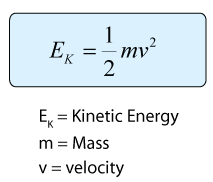
Gravitational potential energy
Energy due to height changes.
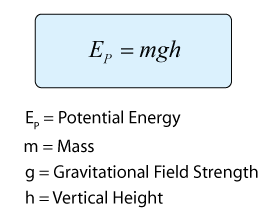
Elastic potential energy
Elastic energy is potential energy stored as a result of the deformation of an elastic object such as the stretching of a spring and is given by the equation
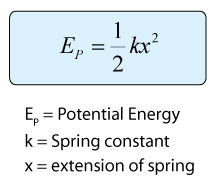
Work done
Work done measures the transfer of energy due to a force and is a scalar quantity.
The work done W by a force F on an object is given by the equation

Power
Power (P) is the work done or the energy output per time
For constant force acting on an object with constant velocity, the power is given by the equation: P=Fv.
Conservation of energy
Energy cannot be created or destroyed, only transformed.
Momentum
The linear momentum (p) is a vector with the same direction as the velocity of an object.
The change of momentum of an object is called impulse.
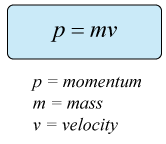
Impulse
Change in momentum.
Area of a force-time graph
Conservation of linear momentum
The law of conservation of linear momentum states that the sum of initial momentum is equal to the sum of final momentum in a closed system
Elastic collision
Momentum conserved
Kinetic energy conserved
Inelastic collision
Momentum is conserved
Kinetic energy is not conserved.
Objects are attached
Explosion
Momentum is conserved
Kinetic energy not conserved
Temperature
Average kinetic energy in a body.
Internal energy
Internal energy is the sum of total kinetic energy (total thermal energy) and total potential energy.
Kinetic energy is energy associated with the random/translational rotational motions of molecules.
Potential energy is associated with forces between molecules.
Specific heat capacity
Heat needed to raise the temperature of 1kg of a substance by 1K.
Q= mcat
Phase change
Change of phase | Process | Kinetic energy | Potential energy |
Solid to liquid | Melting | Unchanged | Increases |
Liquid to solid | Freezing | Unchanged | Decreases |
Liquid to gas | Boiling | Unchanged | Increases |
Gas to liquid | Condensation | Unchanged | Decreases |
Specific latent heat of fusion
The amount of heat required to change 1kg of a substance from solid to liquid without any change in temperature
Specific latent heat of vaporisation
The amount of heat required to change 1kg of a substance from liquid to gas without any change in temperature.
Pressure
Normal force per unit area.
Ideal gas equation
PV = nRT.
Kinetic model of an ideal gas
Assumptions:
The collisions between molecules are perfectly elastic.
The molecules are identical spheres.
The volume of molecules is negligible compared to the volume of the gas.
Molecules do not interact with each other except when they are in constant.
Implications:
Absolute temperature is directly proportional to the average KE and average speed of the molecules of an ideal gas.
Mole
Like the word “dozon”, a mole is a unit of quantity. It is used to measure the number of atoms or molecules.
A mole of any material contains 6.022*10^23 atoms or molecules. The value 6.022*10^23 is called the Avogadro constant.
The number of moles of a substance can be calculated by dividing the number of molecules of that substance by the Avogadro constant.
Molar mass
Mass of 1 mole of a substance.
Differences between real and ideal gases
The ideal gas is based on a list of assumptions stated previously. However, in real gases, such assumptions may not be true.
Forces exist between gas molecules in real gases (intermolecular forces).
The volume of molecules is not negligible compared to the volume of gas in real gases.
Real gases may behave similarly to ideal gases under high temperatures and low pressure.
Simple harmonic motion
Periodic motion around an equilibrium position.
An object undergoes SHM if it experiences a force which is proportional and opposite of the displacement from its equilibrium position.
Period of a pendulum
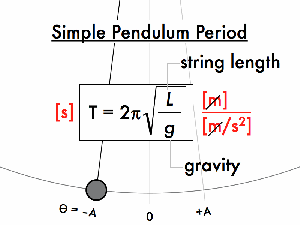
Period of a mass-spring
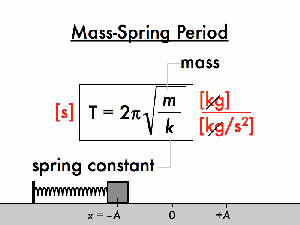
Oscillation displacement
Displacement of the oscillating object at a specific time from its equilibrium position
Oscillation amplitude
Maximum displacement of the oscillating object
Oscillation Period
Time taken in seconds for one complete osillation
Oscillation Frequency
Number of times the object oscillates per unit time (usually one second)
f=1
Phase difference
The difference between two SHMs with the same frequency in terms of their relative position in a cycle measured in radian
Conditions for simple Harmonic motion
When the body is displaced from equilibrium, there must exist a restoring force (a force that wants to pull the body back to equilibrium).
The magnitude of the restoring force must be proportional to the displacement of the body and acts towards the equilibrium
Travelling waves
A travelling wave is a continuous disturbance in a medium characterized by repeating oscillations.
Energy is transferred by waves.
Matter is not transferred by waves.
The direction of a wave is defined by the direction of the energy transfer.
Transverse waves
The direction of oscillation is perpendicular to the direction of the wave
ex. Water waves
A point with maximum positive displacement is called a crest.
A point with minimum displacement is called a trough.
Longitudinal waves
The direction of oscillation is parallel to the direction of the wave
Ex. sound waves
A region where particles are closed to each other is called a compression.
A region where particles are furthest apart from each other is called a rarefaction.
Nature of electromagnetic waves
All EM waves travel in vacuum at the same speed of 3*10^8m/s.
EM waves are transverse waves.
Nature of Sound waves
The speed of sound in 20 degrees Celsius dry air is approximately 343.2m/s.
Sound waves are longitudinal waves.
Wave fronts
Lines joining points which vibrate in phase.
Can be straight lines or curves.
The distance between successive wavefronts is the wavelength of the wave.
Rays
Lines which indicate the direction of wave propagation.
Rays are perpendicular to wavefronts.
Amplitude
The amplitude and intensity of a wave depends on its energy.
The intensity of a wave is proportional to the square of its amplitude (I∝A^2)
Superposition
The left shows constructive interference (superposition) where the two waves add up (e.g. 1+1=2). The right shows deconstructive interference (superposition) where the two waves cancel each other (e.g. 1+(-1)=0).
Polarization
Light is a transverse wave (polarization only occur to transverse waves).
The polarization of light refers to the orientation of the oscillation in the underlying electric field.
Light is plane polarized if the electric field oscillates in one plane.
Polarizers
Sheet of material that polarizes light
Unpolarized light passes through and intensity is reduced by 50%
Analyzer
Polarized light passes through a polarizer, intensity will be reduced by a factor dependent on the orientation of the polarizer. This property allows us to deduce the polariation of light by using the polarizer
A polarizer used for this purpose is called an analyzer
Malu’s law
relates the incident intensity and transmitted light passing through a polarizer and an analyzer
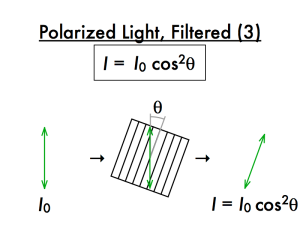
Reflection
Angle of incidence equals angle of reflection.
Reflection of waves from a fixed end is inverted
Reflection of waves from a free end is not inverted
Refraction
Change in wave direction when passing from one medium to another.
The angle of incidence and the angle of the refraction can be determined by Snell’s law
Snell’s law
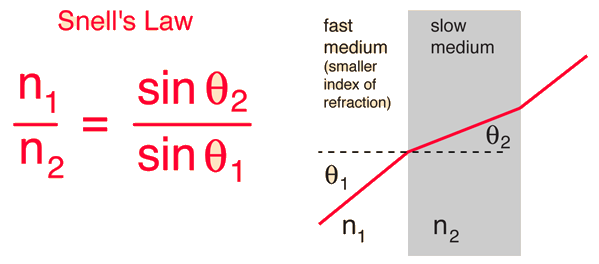
Critical angle
If the angle of incidence is equal to the critical angle, most of the light travles along the surface and some is reflected back.
If the angle of incidence is greater than the critical angle all the light is reflected back

It must come from an optically denser medium to an optically less dense medium
Single-slit diffraction
Narrower diffraction pattern with a wide slit.
One large max, the rest are considerable smaller
Interference patterns
Constructive and destructive interference creating maxima and minima.
Constructive must be a full wavelength apart
Deconstructive is half a wavelength apart
Double slit interference
Double slit interference has the same pattern as single slit, however each peak is divided into smaller peaks and it has more minimums
Standing waves
Waves with fixed positions (nodes) and maximum displacement (antinodes).
Energy is not transferred
Boundary condiditons
Antinodes are open ends and nodes are closed ends
For a closed and open end pipe the wavelength is 4L/n where n is the harmonic
For a string with two closed ends the wavelength is s2L/n and same for a pipe with two open ends
Nodes and antinodes
Fixed positions also known as minimum are nodes and the positions of largest displacement is antinodes.
The distance between nodes are half a wavelength
Difference between standing waves and travelling waves
Standing waves | Travelling waves |
No energy is propagated along a standing wave A standing wave has nodes and antinodes The amplitude of the standing wave varies along the wave Particles between two adjacent nodes oscillate in phase and particles separated by exactly one node oscillate in antiphase. | Energy is propagated in a travelling wave A travelling wave has neither nodes nor antinodes The amplitude of the travelling wave is constant throughout the wave The phase difference between two particles of a travelling wave can take any value between 0 and 2π |
Displacement- time graph
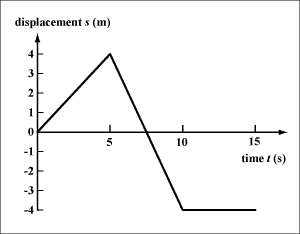
Velocity time graph
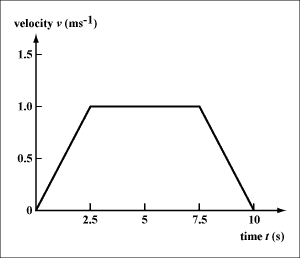
Acceleration- time graph

Changes of projectile motion with air resistance
The maximum height of the projectile is lower
The range of the projectile is shorter
The trajectory is not symmetric
Charge
Can be positive or negative
Electric charge is always conserved
Unit is Coulomb
Electric field
Electric fields can be graphically represented as electric field lines
Electric field strength E is the force per unit charge experienced by a positive test charge placed in the field
Coulomb’s law
where F is the force, q1 and q2 are the charge of the two objects (usually the same when considering two electrons), and r is the radius/distance between the two charges.
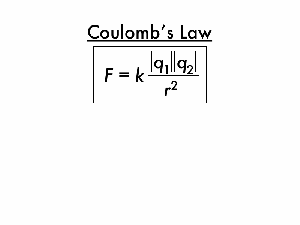
Uniform electric field
In an uniform electric field can be cancelled down to E= k(Q/r²)
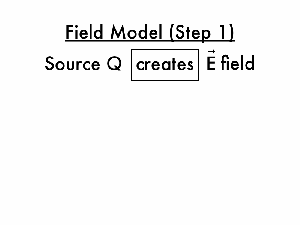
Electric current
Electric current (I) refers to the rate of flow of electric charge and can be given by the equation

Direction of current flow
The direction of an (conventional) electric current is opposite to the direction of electron flow.

Direct current
Direct current (dc) is a uniform current flowing in one fixed direction in a circuit.
Direct current is usually supplied by acid-based batteries or dry cells.

Potential difference
The electric potential difference (pd) between two points is equal to the work done (energy) required per unit charge to move from one point to another. It is also known as voltage (V).

Resistors
A resistor is an electrical component which implements a specific resistance within an electric circuit.
A resistor with adjustable resistance is called a variable resistor.
Resistors can be connected in series or in parallel.

Voltmeter
A voltmeter is used to measure the potential difference between two points.
A voltmeter should be connected in parallel with the components being measured.
An ideal voltmeter has infinite resistance.
Ameter
An ammeter is used to measure the current passing through a point.
An ammeter should be connected in series at the point of measurement.
An ideal ammeter has zero resistance.
Kirchhoff’s junction rule
Kirchhoff’s junction rule is a statement of the conservation of charge flow per time. The sum of all currents flowing into a junction must equal the sum of all currents flowing out.

Kirchhoff’s loop rule
Kirchhoff’s loop rule is a statement of the conservation of electric potential energy per charge. For a complete loop of an electrical circuit all of the electric potential rises added together must equal all of the electric potential drops added together.

Ohm’s Law
Ohm’s law states that the current flowing through a conductor is proportional to the electric potential difference across the conductor.
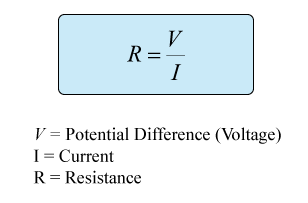
Resistivity
The resistance of an object is proportional to its length (L) and inversely proportional to its cross-sectional area (A).
The resistance is influenced by the resistivity constant of the object (determined by the material it is made out of).

Exceptions to Ohm’s law
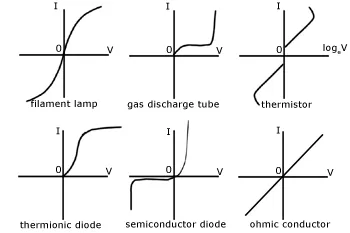
Power dissipation
P= VI = I²R= V²/R
Internal resistance
The internal resistance is the resistance of a source determined by the material it is made up of.
The internal resistance can be used to calculated the emf.
Secondary cells
A secondary cell or battery can be recharged after use by passing current through the circuit in opposite direction to the current during the discharge.

Terminal potential difference
The potential difference at the terminals of a source is less than the emf of the source due to internal resistance
Electromotive force emf
The electromotive force (emf) of a source is defined as the energy per unit charge supplied by the source.
The unit for emf is volt (V).

Magnetic field
Magnetic fields are caused by the presence of magnets or moving charges.
Similar to how an electric charge experiences a force in an electric field, a magnet or an electric current experiences a force in a magnetic field.
The unit of a magnetic field is Tesla (T).
Magnetic field patterns
Magnetic fields can be graphically represented using magnetic field lines.
The direction of the field at a point is equal to the direction of the field line passing through that point.
The magnitude of the field at a point corresponds to the density of the field lines around that point.
Magnetic force
The magnitude of the force acting on a current-carrying wire due to a magnetic field can be given by

The equation may be multiplied by sinθ where θ is the angle between the direction of the field and the current. This can be ignored when θ=90 degrees because sin90 degrees equals to 1.
Magnetic force on a moving charge
The magnitude of the force acting on a moving charge due to a magnetic field can be given by

where F is the force acting on the wire, B is the magnetic field, q is the amount of charge, v is the velocity of the charge, and θ is the angle between the direction of the field and the velocity.





